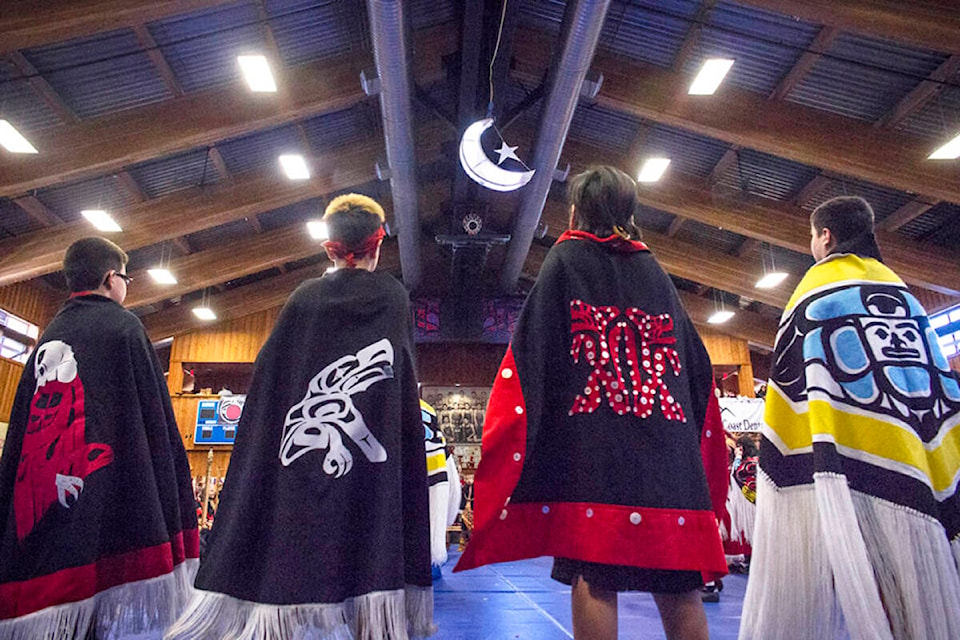Hoobiyee is the Nisga’a new year, typically celebrated in February or March. This year, the celebration came to Laxgaltsap Village, with anticipated crowds of more than 2,200 people from the Nisga’a First Nation, Feb. 24 and 25.
“Lots of planning, upwards of 2,200 participants and witnesses will be here. It’s two days of cultural dancing, singing, and story telling,” said Matthew Bright, a councilor of the Laxgaltsap Village government.
This year’s celebration saw the raising of a traditional totem pole, a replication of the original Eagle-Halibut Pole of Laay that currently stands at the Museum of Anthropology in Vancouver. The original is thought to have been carved by the Nisga’a Nass River carver Oye’a’ between 1860 and 1870.
The Nisga’a Ganada (frog) Wilp of Ni’isjoohl will host Scottish officials to continue important preparations for the repatriation of the Ni’isjoohl Memorial Pole that stands in Edinburgh at the National Museum of Scotland.
Following the Nisga’a delegation’s trip to Scotland in August of 2022, on Nov. 30 2022, the Scottish Government accepted the request of Sim’oogit Ni’isjoohl, also known as Chief Earl Stephens, and Sigidimnak’ Noxs Ts’awit, also known as Dr. Amy Parent, to return the pole of their ancestors back to Nisga’a Lands.
“We are excited to have the opportunity to share Nisg̱a’a lip wilaa loom — Nisga’a way of life with the Scottish officials by bringing them to Hoobiyee celebrations in Laxgalts’ap,” said Dr. Amy Parent in a press release.
“As with our Wilp (House) pole that they will be returning to us, they will see how our culture thrives and how our history is told through the beat of the drum, song and dance.”
The marking of the new harvest year is tied closely with the return of the oolichan fish, which have historically been an important source of food for communities located near rivers in northern B.C.
“In years past in our history it was recognized that the oolichan was nicknamed Saviour Fish, because it saved a lot of people from starvation,” said Bright.
“After a long hard winter, nations from all over would trek to the Nass River. A lot of people perished on their journey, and those that survived only survived because of the oolichan fish.”
Oolichan are anadromous fish, meaning they spend their adult lives in the ocean but return to their freshwater rivers and streams to spawn. If the spawning season occurs in time, oolichan will be prepared and served during the Hoobiyee celebration.
Another important aspect of Hoobiyee is reading the position of the crescent moon.
“When it’s facing upwards, and there’s a star on top of the spoon, it is generally believed that the harvest year would be a very good one,” said Bright.
“The Nisga’a Nation has so much to celebrate. It is incredibly encouraging that our culture remains vibrant and strong as we gather in song and dance at Hoobiyee,” said Nisga’a Nation President Eva Clayton in a press release.
“As we enter a new season of harvest, it is imperative we continue to make every effort to keep our language and culture alive and well through our deeply embedded connection with K’alii-aksim Lisims, our Nass River and our lands, mountains and streams.”
